"(《世界人权宣言》)
医疗保健领域的IoT 物联网革命正在以前所未有的方式改变医疗专业人员提供护理、管理运营以及与患者联系的方式。随着医疗IoT 系统变得越来越复杂,它们正在实现病人实时监控、医院自动化运营和智能医疗设备管理,而这在十年前是不可能实现的。
从全天候跟踪生命体征的远程患者监护设备到优化资源配置的智能医院系统,医疗物联网正在创造一种新的模式,在这种模式下,数据驱动的洞察力能够改善患者的治疗效果,同时降低运营成本,提高整个医疗生态系统的效率。 让我们讨论一下当今的 IoMT 正在发生怎样的变化,以及 Digi 如何支持医疗设备制造商的需求。
获取我们的白皮书
了解新出现的医疗器械网络安全法规
下载 PDF
医疗物联网 (IoMT) 的作用

医疗物联网(IoMT)通过创建互联生态系统,使医疗设备、传感器和系统能够无缝通信,从而改善患者护理和运营效率,从根本上改变了医疗服务。
目前,医疗IoT 的应用范围很广,从持续监测病人生命体征的可穿戴设备,到确保关键设备在需要时随时可用的先进医院资产跟踪系统,不一而足。先进的传感器技术、广泛的连接性以及对更高效医疗服务模式的迫切需求,共同推动了IoT 在医疗领域的快速应用。
最近的统计数据凸显了采用 IoMT 带来的巨大影响:
向预防性和个性化医疗转变
IoT 在医疗保健领域的应用实现了持续的健康监测,使治疗方法从被动反应转变为积极主动。联网设备可收集患者的实时数据,使医疗服务提供者能够及早发现异常,并根据患者的个体模式定制干预措施,最终改善治疗效果,同时减轻医疗系统的负担。
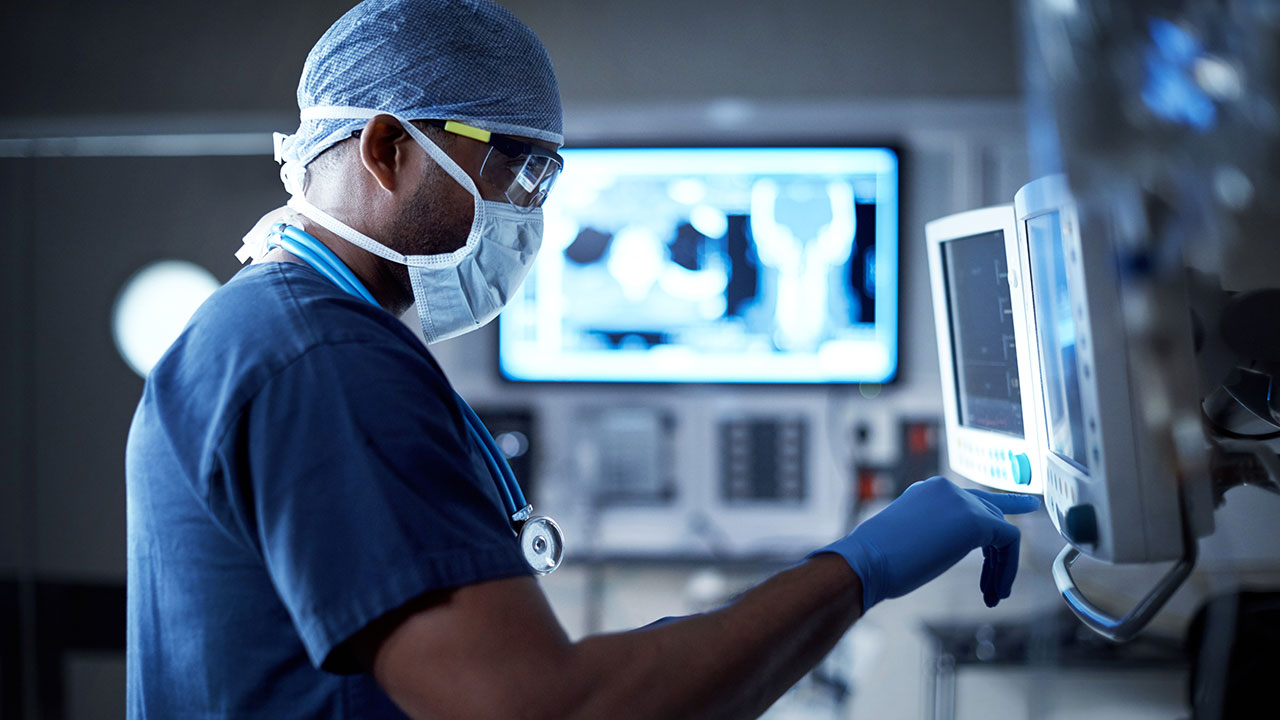
实时决策的必要性
现代急诊室和重症监护室依靠IoT 医疗设备提供的即时数据做出挽救生命的决定。医疗IoT 系统可提供持续的重要信息流,使医疗团队能够立即应对病人病情的重大变化,并无缝协调各部门的护理工作。
医疗基础设施面临的压力不断增加
人口老龄化和劳动力短缺对全球医疗服务提供商提出了前所未有的要求。医疗保健领域的IoT 解决方案通过自动监控、预测性维护和智能资源分配,帮助医疗机构扩大护理能力,使现有员工能够在不影响护理质量的情况下管理更多的病人。
通过联网设备对患者进行远程监控,可实现对生命体征的持续跟踪、异常读数的实时警报以及全面的术后护理管理。这些IoT 医疗设备可减少病人再次入院的次数,同时通过在家康复提高病人的舒适度。安全连接解决方案可确保可靠的数据传输,同时维护患者隐私并符合 HIPAA 合规性。
医院和诊所的运营效率
智能医院在医疗保健领域利用IoT 进行实时资产跟踪、预测性设备维护和自动调度系统。这些技术减少了设备停机时间,防止了关键物资的损失,并优化了员工的工作流程,从而大大节约了成本,改善了医疗机构的病人护理服务。
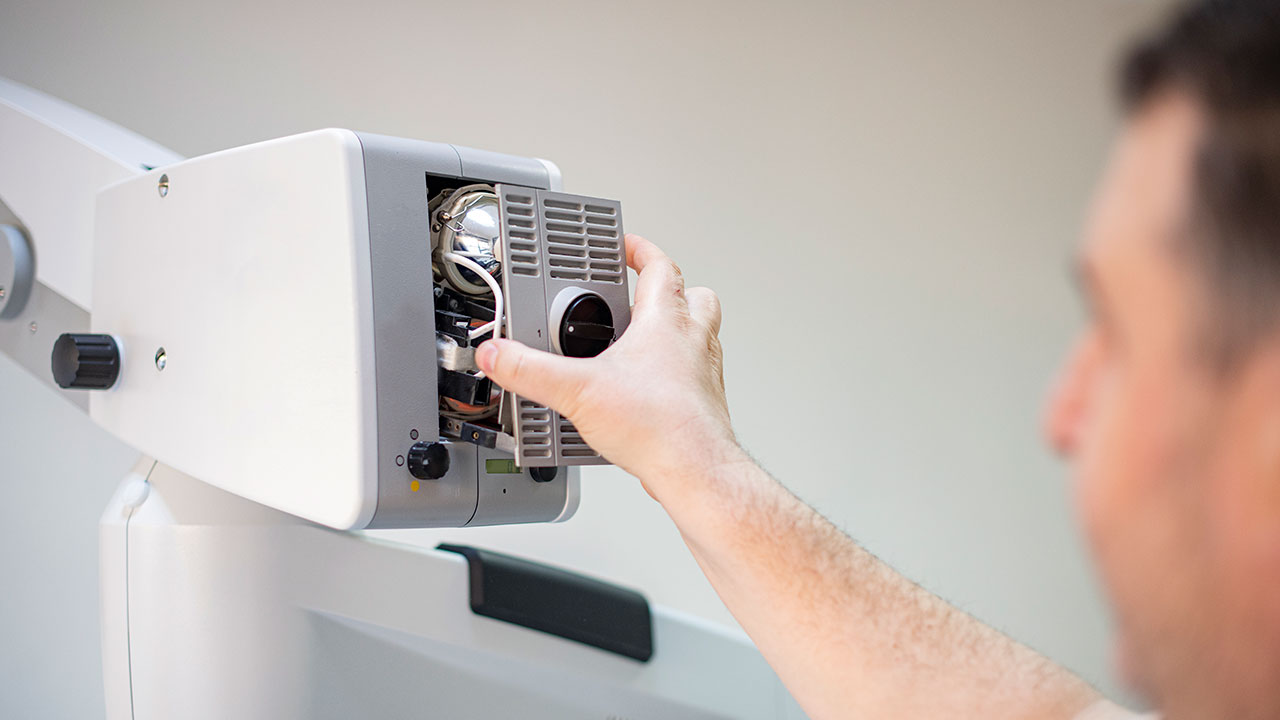
改进药物管理
互联配药机和智能传感器可通过自动剂量验证和实时依从性监测防止用药错误。医疗IoT 系统可跟踪药物库存,提醒工作人员注意潜在的药物相互作用,并确保患者在规定时间获得正确的药物,从而大幅减少药物不良事件,改善治疗效果。
HIPAA 合规性和安全性
在医疗IoT 部署中,保持 HIPAA 合规性仍然至关重要。先进的安全框架通过加密、安全认证和持续监控提供端到端的数据保护。这些全面的安全措施可确保患者数据得到保护,同时实现现代医疗保健所需的无缝连接。
更快的应急响应
医疗保健领域的IoT 可实现救护车的实时连接,在运送过程中将病人的生命体征直接传送到急诊科。这种提前预警功能可让急诊室团队在病人到达前准备好适当的资源和专家,从而减少关键的治疗延误,并显著提高创伤和心脏急诊的存活率。
IoT 在医疗保健领域的应用
IoT 在医疗保健领域的实际应用涵盖各种临床和运营场景,每种应用都能为患者护理和设施管理带来可衡量的改进。从单个患者监控到企业范围的资产管理,物联网技术正在重塑医疗机构提供服务的方式。这些用于医疗保健的IoT 解决方案展示了互联医疗技术在各种医疗保健环境和专业领域的多功能性和影响力。
远程病人监护 (RPM)
远程患者监测是医疗保健领域最具影响力的IoT 应用之一,可穿戴传感器和联网设备可为护理团队提供连续的健康数据。这些系统跟踪包括心率、血压、血糖水平和血氧饱和度在内的生命体征,将数据实时传输给医疗服务提供者。事实证明,RPM 技术对管理慢性病特别有价值,当病人的指标显示可能出现并发症时,它可以进行早期干预,从而减少再住院率。
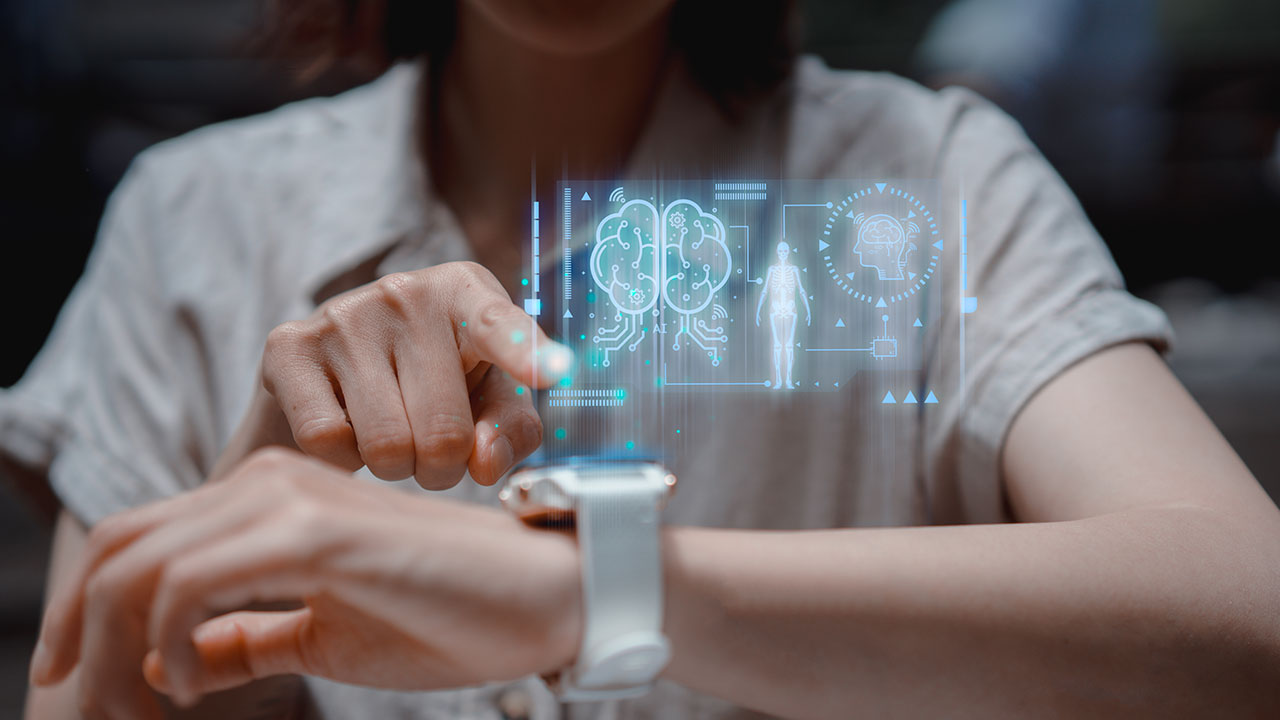
智能医院和病房
智能医院将整个设施中的IoT 医疗设备整合在一起,创造出能自动响应病人和员工需求的智能环境。联网系统可根据病人的喜好和医疗要求控制室内温度、照明和湿度。先进的病床传感器可检测病人的移动,并提醒工作人员注意可能发生的跌倒,而集成呼叫系统则可根据紧急程度确定请求的优先级。这些医疗IoT 的实施提高了患者的满意度,同时通过自动化减少了员工的工作量。
资产跟踪和设备管理
医疗保健领域的IoT 通过对关键医疗设备进行实时定位跟踪,彻底改变了设备管理。医院每年通常会损失 10-20% 的移动设备,但医疗IoT 解决方案几乎可以消除这些损失。轮椅、输液泵和诊断设备上的智能标签可实现即时位置识别,而使用分析可优化各部门的设备分配。预测性维护警报可防止意外故障的发生,确保救生设备在最需要时仍能正常运行。
疫苗和药品的冷链监控
对温度敏感的药品在储存和运输过程中需要持续监控,因此医疗IoT 对保持冷链完整性至关重要。连接的传感器可实时跟踪温度、湿度和光照,一旦发现可能影响药效的异常情况,立即向工作人员发出警报。在 COVID-19 疫苗分发过程中,这种能力被证明是至关重要的,因为超低温储存要求精确的环境控制。现代冷链监控系统每年可避免数百万美元的药品损失,同时确保患者安全。

员工实时交流
在医疗保健领域,IoT 驱动的集成通信系统可简化工作流程,缩短整个医疗保健设施的响应时间。互联设备可实现护理团队之间的即时通讯、基于人员可用性的自动警报路由,以及手术过程中的免提通讯。这些系统可减少 70% 的寻呼开销,最大程度地减少通信延迟,并改善护理协调,尤其是在分秒必争的紧急情况下。
IoT 技术推动医疗保健进步
医疗保健领域IoT 的技术基础包括精密的硬件和软件系统,它们协同工作以提供可靠、安全的连接。了解这些核心IoT 技术有助于医疗机构就其数字化转型计划做出明智决策,并选择符合其特定运营要求和患者护理目标的解决方案。
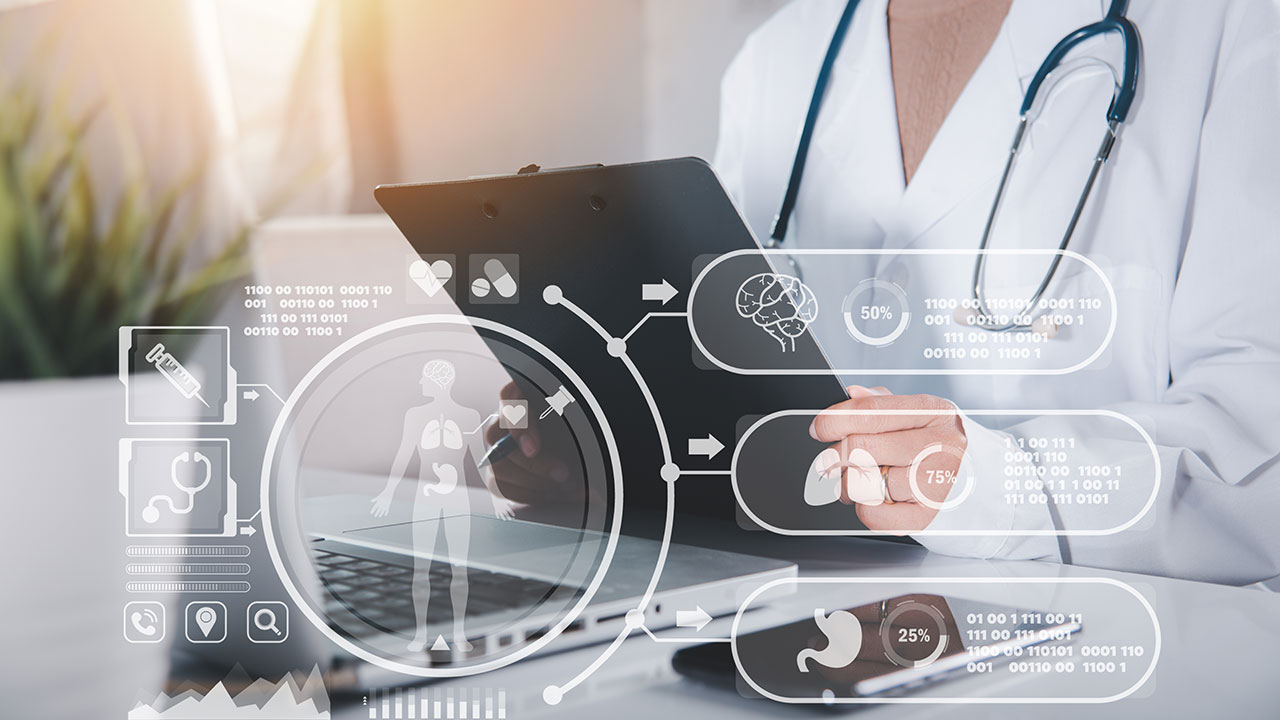
IoT 医疗设备和可穿戴设备
IoT 医疗设备包括从消费者健身追踪器到美国食品及药物管理局批准的临床监护仪等各种设备。先进的生物传感器可同时测量多种生理参数,而智能血糖监测仪则可自动记录读数并计算胰岛素需求量。现代智能手表可检测心律不齐,并提醒用户注意潜在的心房颤动,这表明消费类设备如何通过持续的健康监测功能为临床护理提供越来越多的支持。
蜂窝路由器和网关
工业级蜂窝路由器是医疗保健IoT 网络的骨干,可提供跨设施的可靠连接,并实现从边缘到云的数据传输。这些路由器支持多种连接选项,包括 4G/5G 蜂窝、Wi-Fi 和以太网,即使在网络故障时也能确保连续运行。先进的路由选择功能可优先处理关键医疗数据,同时保持整个医疗环境中所有连接设备的服务质量。
远程管理和自动化
集中管理平台使 IT 团队能够从单一界面监控、配置数千台IoT 医疗设备并排除故障。这些系统提供设备健康状况的实时可见性,自动固件更新,并实现远程诊断,从而将现场维护需求降低 60%。自动报警和自我修复功能可确保关键医疗系统的持续运行。
查看Digi Remote Manager 101:设备健康指标介绍,了解如何提高远程管理和自动化水平。
数据安全框架
全面的安全框架可在医疗保健IoT 部署的整个过程中保护敏感的患者数据。这些框架实施了多个安全层,包括设备验证、数据加密、网络分段和持续威胁监控。端到端加密可确保数据在传输和存储过程中始终受到保护,而定期的安全更新可应对新出现的威胁,并在所有联网的医疗系统中保持合规性。
医疗保健领域IoT 面临的挑战
虽然IoT 在医疗保健领域带来了变革性的好处,但其实施也带来了重大挑战,组织必须应对这些挑战,以确保成功部署。医疗保健对可靠性、安全性和合规性的严格要求造成了独特的障碍,使医疗IoT 消费或工业应用。了解了这些挑战,医疗机构就能制定全面的战略,在降低风险的同时最大化医疗IoT 投资的价值。
安全性和 HIPAA 合规性
维护安全性和 HIPAA 合规性是医疗保健IoT 部署的首要挑战。联网的医疗设备为网络攻击创造了无数潜在的切入点,每台设备都有可能暴露患者数据或破坏关键的护理系统。医疗机构必须实施全面的安全措施,包括加密、访问控制和持续监控,同时确保IoT 医疗设备符合严格的监管要求。定期进行安全审计和更新对于防范不断变化的威胁至关重要。
集成与互操作性
医疗保健机构往往难以将新的医疗保健IoT 解决方案与现有的传统系统和电子健康记录集成。不同的设备使用不同的通信协议和数据格式,造成信息孤岛,无法实现无缝信息共享。要实现真正的互操作性,需要精心规划、标准化接口,而且往往需要对基础设施进行重大升级。各组织必须在对现代 IoMT 功能的需求与拥有几十年历史但仍对运营至关重要的系统的现实之间取得平衡。
网络可靠性
医疗保健领域的IoT 要求卓越的网络可靠性,因为设备故障会直接影响病人护理。医疗设施需要冗余连接选项,以确保在主网络故障时能够持续运行。带宽限制会影响多台设备的实时数据传输,而设施内的死角则会造成覆盖缺口。医疗机构必须设计具有足够容量、冗余度和覆盖范围的强大网络,以支持不断增加的联网医疗设备。
设备可扩展性和管理
随着医疗机构扩大IoT 在医疗领域的部署,管理成百上千台IoT 设备变得越来越复杂。每台设备都需要调配、监控、更新和最终停用,从而产生大量管理费用。如果没有适当的管理工具,IT 团队很难对不断增长的设备群保持可见性和控制力。可扩展性方面的挑战包括确保性能一致、维护所有设备的安全性以及有效管理不同设备类型的生命周期。
医疗保健领域的IoT 解决方案
要应对医疗保健领域IoT 的复杂挑战,就必须有专为医疗环境设计的全面解决方案。这些专业平台和框架可提供医疗IoT 部署所需的安全性、可靠性和可扩展性,同时简化管理并确保符合法规要求。
通过本视频短片了解如何改造您的医疗保健技术基础设施.
Digi 远程管理器
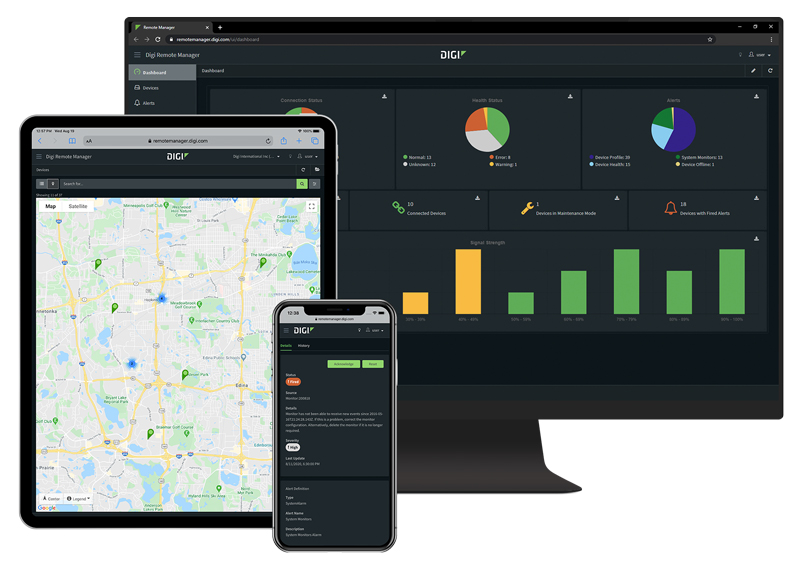 Digi Remote Manager® 通过对分布式IoT 医疗设备进行集中控制,改变了设备管理方式。这一基于云的平台可实现整个设备网络的安全远程访问、实时监控和自动故障排除。
Digi Remote Manager® 通过对分布式IoT 医疗设备进行集中控制,改变了设备管理方式。这一基于云的平台可实现整个设备网络的安全远程访问、实时监控和自动故障排除。
医疗保健 IT 团队可以远程配置设备、部署更新和解决问题,从而将维护成本降低 50%,同时确保关键医疗系统的持续运行。
Digi TrustFence® 安全框架
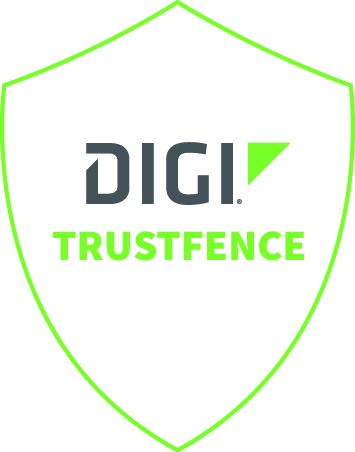 Digi TrustFence® 通过设备级保护为医疗IoT 部署提供全面的安全性,确保符合 HIPAA。该框架实现了安全启动、加密存储、受保护端口和验证连接,以保护患者数据的安全。
Digi TrustFence® 通过设备级保护为医疗IoT 部署提供全面的安全性,确保符合 HIPAA。该框架实现了安全启动、加密存储、受保护端口和验证连接,以保护患者数据的安全。
内置安全功能可防止未经授权的访问,同时保持实时医疗应用和重症监护系统所需的性能。
Digi IX 系列和 Digi EX 系列路由器
Digi IX 和 EX 系列路由器为要求苛刻的医疗环境提供医疗级连接。这些工业路由器通过蜂窝、Wi-Fi和有线选项,为设施、救护车和远程诊所提供可靠的连接。冗余连接可确保在网络故障时持续运行,而先进的路由选择功能可优先处理关键医疗数据,以保持服务质量。
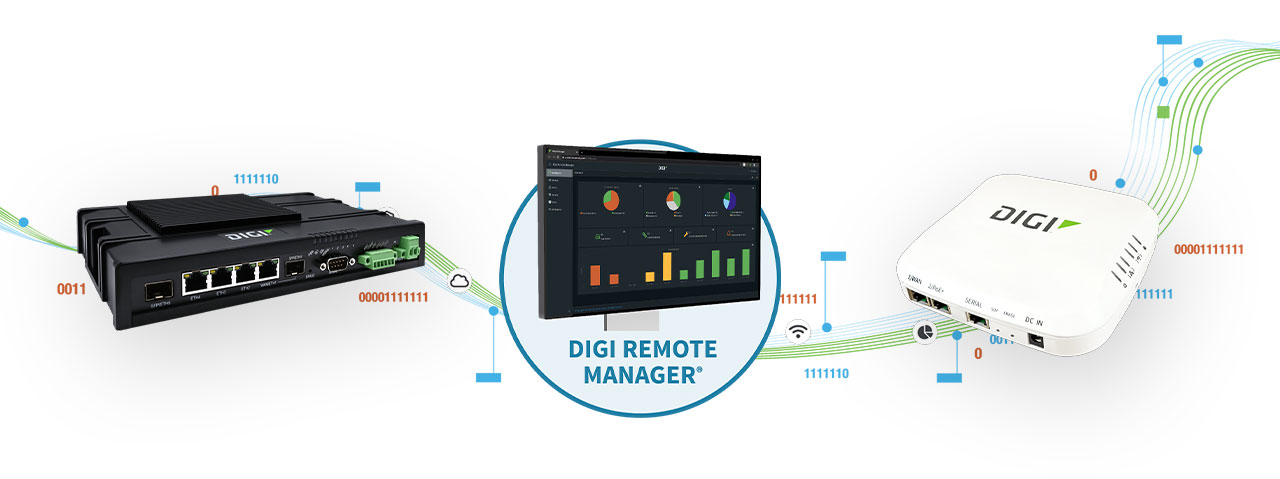
Digi ConnectCore 开发人员解决方案
Digi ConnectCore® 嵌入式系统模块具有预先认证的无线功能和全面的安全特性,可加速联网医疗设备的开发。这些模块简化了设备设计,同时确保符合法规要求,缩短了创新型IoT 医疗设备的上市时间。

集成的 Digi TrustFence 安全系统与Digi ConnectCore 服务相配合,支持安全监控和设备管理功能,因此制造商可以专注于将安全可靠的医疗产品快速推向市场,而不是应对工程和部署方面的挑战。
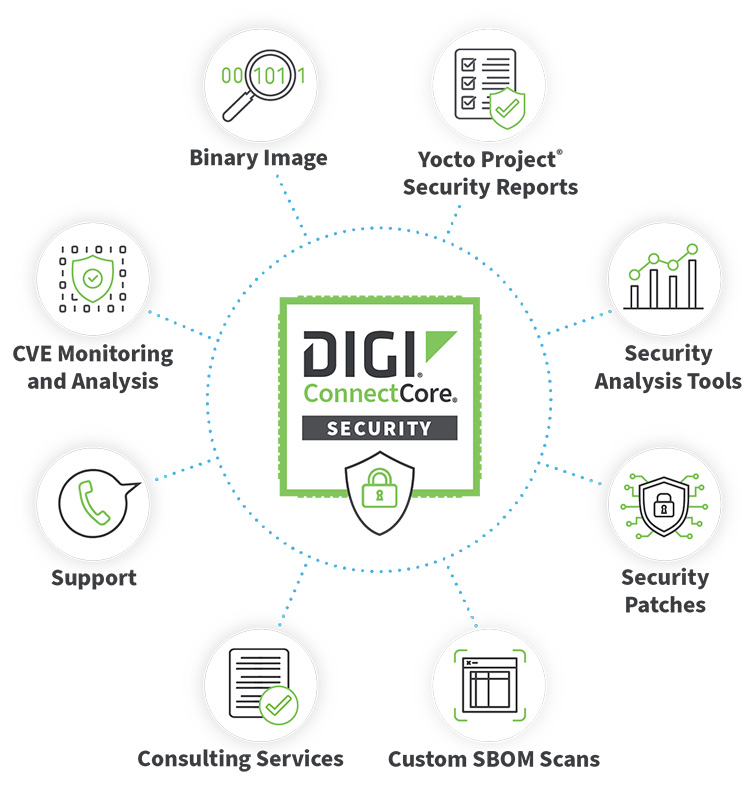 Digi ConnectCore 云服务:这些服务使原始设备制造商能够利用Digi ConnectCore SOM 创建具有远程控制面板、服务和应用功能的连接设备。它们还确保企业能够长期监控已部署的设备,执行安全的远程固件更新,接收实时警报,并监控网络、设备和资产的性能和安全性。
Digi ConnectCore 云服务:这些服务使原始设备制造商能够利用Digi ConnectCore SOM 创建具有远程控制面板、服务和应用功能的连接设备。它们还确保企业能够长期监控已部署的设备,执行安全的远程固件更新,接收实时警报,并监控网络、设备和资产的性能和安全性。- Digi ConnectCore 安全服务:这些服务和工具使企业能够在整个产品生命周期内维护设备安全。它们能够监控和分析在Digi ConnectCore SOM 上运行的定制软件物料清单(SBOM)和二进制映像的安全风险和漏洞。
进一步了解如何利用Digi ConnectCore 解决方案设计安全、合规的医疗设备。
Digi XBee 生态系统
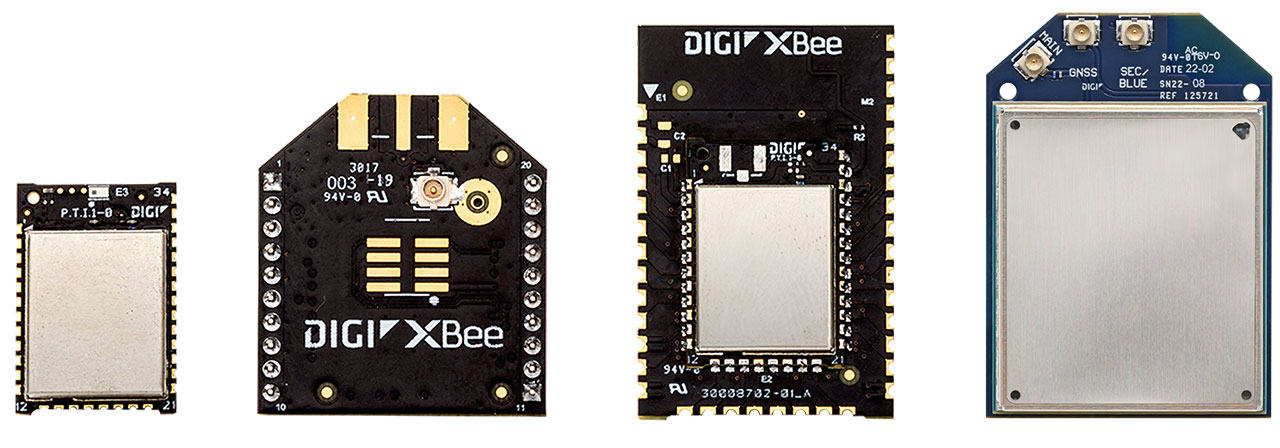
Digi XBee®模块通过支持多种协议的多功能射频解决方案,实现了医疗IoT 设备的无线连接。这些模块可为医疗传感器、可穿戴设备和设施自动化系统提供可靠的短程通信。低功耗延长了便携式设备的电池寿命,而网状网络功能则确保了整个医疗设施的稳健连接。
此外,Digi XBee 还是一个由模块、开发工具和管理工具组成的完整生态系统,可用于配置、测试和远程监控。
Digi 的 SmartSense
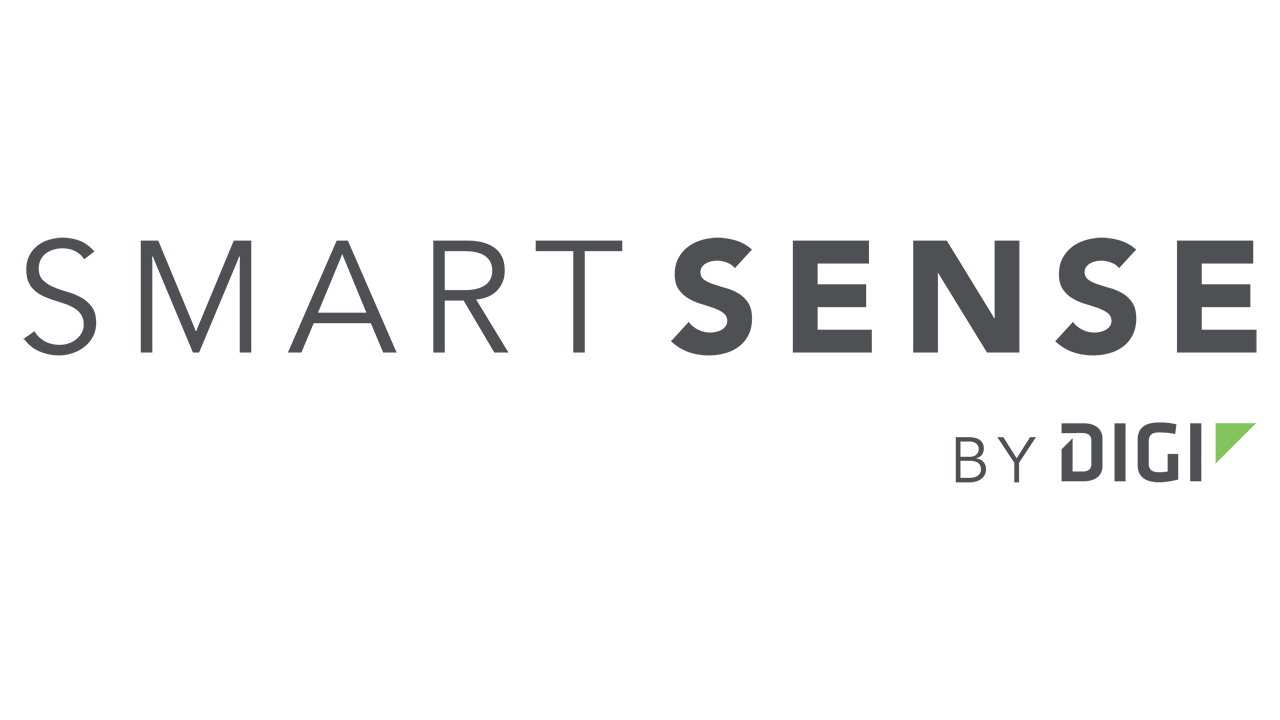 Digi 的 SmartSense 为整个冷链中对温度敏感的药品和医疗用品提供全面的监控解决方案。该平台结合了无线传感器、云端监控和自动报警功能,可确保药品的完整性。
Digi 的 SmartSense 为整个冷链中对温度敏感的药品和医疗用品提供全面的监控解决方案。该平台结合了无线传感器、云端监控和自动报警功能,可确保药品的完整性。
实时了解环境条件可防止损失,同时确保符合疫苗、血液制品和其他重要医疗用品的存储要求。
Digi 360IoT 解决方案
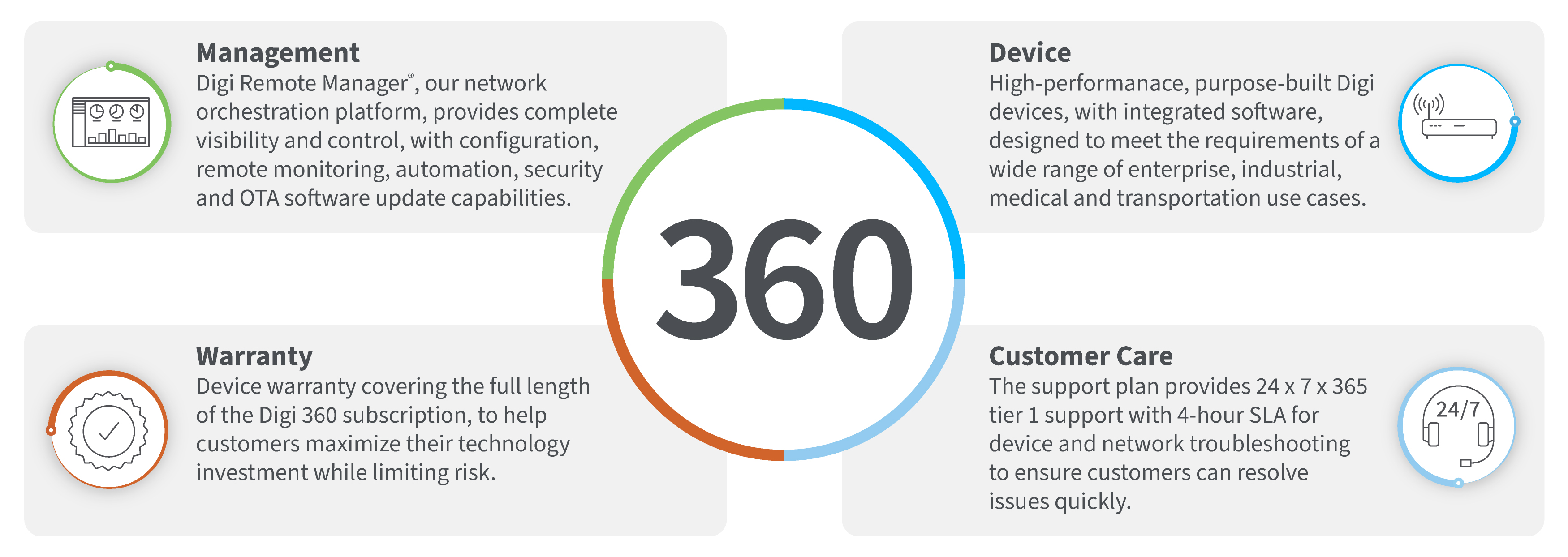 Digi 360 提供一个集成的医疗保健IoT 平台,将连接、安全和管理功能整合到一个统一的解决方案中。这种全面的方法简化了部署,同时确保了不同医疗设备和系统之间的互操作性。通过这个专为医疗环境设计的全方位平台,医疗机构可从降低复杂性、提高可视性和简化操作中获益。
Digi 360 提供一个集成的医疗保健IoT 平台,将连接、安全和管理功能整合到一个统一的解决方案中。这种全面的方法简化了部署,同时确保了不同医疗设备和系统之间的互操作性。通过这个专为医疗环境设计的全方位平台,医疗机构可从降低复杂性、提高可视性和简化操作中获益。
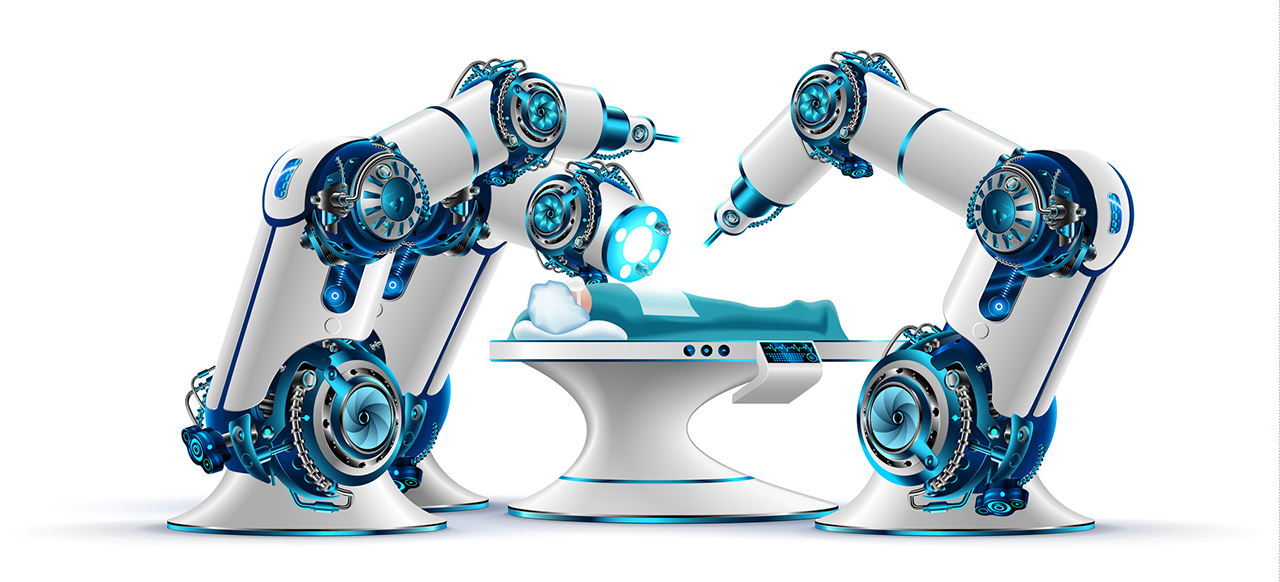
物联网技术的未来
IoT 在医疗保健领域的未来有望在新兴技术的推动下取得革命性的进步,从而进一步改变医疗保健的提供方式。第五代 (5G) 蜂窝网络可实现超低延迟连接,支持用于医疗培训的实时手术机器人和增强现实应用。
与 IoMT 系统集成的人工智能将提供预测性分析,在症状出现之前预测医疗紧急情况,而边缘计算则可直接为医疗设备提供处理能力,从而在不依赖云的情况下即时做出决策。区块链技术有望确保医疗记录的安全,并确保分布式医疗IoT 网络的数据完整性。
随着这些技术的成熟,我们将看到越来越复杂的应用,包括人工智能驱动的诊断工具、基于持续监测的个性化治疗方案,以及可与现场咨询相媲美的虚拟护理环境。准备迎接这一未来的医疗机构应探索全面的IoT 解决方案,为采用这些新兴功能提供灵活性和可扩展性。
通过 Digi 实现IoT 医疗保健管理
IoT 在医疗保健领域带来的变革标志着整个医疗保健生态系统中医疗保健的提供、管理和优化方式发生了根本性转变。从让易受伤害的病人安全在家的远程病人监护,到自动调整以满足病人需求的智能医院,医疗IoT 技术正在创造更加高效、有效和以病人为中心的护理模式。
在医疗机构应对围绕安全性、集成性和可扩展性的实施挑战时,Digi International 提供的综合解决方案为医疗机构成功部署IoT 奠定了坚实的基础。通过将安全连接、集中管理和医疗保健专用功能相结合,这些平台使医疗机构能够充分发挥联网医疗保健的潜力,同时保持病人护理所需的可靠性和合规性。
要进一步了解如何在贵机构实施医疗保健IoT 解决方案,请浏览Digi 的医疗解决方案,了解Digi Remote Manager®如何改变您的医疗保健技术基础设施。

什么是医疗物联网(IoMT)
IoMT(有时称为 "医疗IoT"或 "保健IoT")描述了通过互联网或其他网络连接的医疗设备、传感器、可穿戴设备和系统网络。这些设备监控、收集、传输或分析健康数据,并支持远程病人监控、智能配药、可穿戴健康追踪器、医院资产追踪和远程医疗等应用。
IoMT 与一般IoT 或工业IoT有何不同?
IoT 涵盖广泛的设备和应用(智能城市、工业自动化、农业等),而 IoMT 则专门针对医疗和保健用例。主要区别如下
- 安全和监管:医疗器械必须满足严格的监管、安全和可靠性要求(如美国的 FDA、欧洲的 CE/CRA)。
- 数据敏感性和隐私:IoMT 处理受保护的健康信息 (PHI),因此合规性(HIPAA、GDPR 等)至关重要。
- 实时或接近实时的限制:许多医疗用例要求低延迟和高可用性。
- 互操作性和标准:IoMT 通常必须与医院信息系统(EHR/EMR)、临床工作流程和医疗标准(HL7、FHIR、DICOM 等)集成。
- 设备生命周期和维护:医疗设备的产品生命周期通常较长,需要进行重要的软件/固件更新,而且在许多情况下必须保持持续运行。
IoMT 的常见应用有哪些
下面是一些具有代表性的应用:
- 远程病人监测(生命体征、心电图、体温)
- 智能配药机/药物依从性系统
- 可穿戴设备(健身、姿势、跌倒检测、康复监测)
- 医院环境和卫生监测(空气质量、卫生、病原体检测)
- 资产跟踪(设备、用品)
- 冷链和药品温度监测
- 远程医疗、机器人辅助手术、远程手术
- 成像和诊断(如 3D 伤口测量)
- 应急响应协调和第一响应人连接
物联网医疗设备/联网医疗设备的主要安全风险是什么?
安全可能是 IoMT 领域面临的最大挑战之一。一些主要风险包括
- 未经授权的访问或控制:攻击者可能会劫持医疗设备(如起搏器、输液泵)或操纵其功能
- 数据泄漏或个人健康信息泄露:敏感的健康数据(生命体征、诊断、身份识别信息)可能被截获或外流
- 中间人(MITM)攻击:设备与服务器/云之间的通信可能被拦截或更改
- 固件或软件泄露:恶意或被操纵的固件更新可能会引入漏洞或后门程序
- 拒绝服务 (DoS) 或干扰:禁用或干扰医疗设备或通信链路可阻止必要的操作
- 供应链攻击:在硬件或组件制造过程中,或在第三方库中可能会插入漏洞
- 弱验证/默认凭证:装有弱密码或默认密码的设备是主要攻击目标
- 不安全的接口/应用程序接口/协议:可利用不安全的端点或协议缺陷
Digi 为医疗保健系统和开发联网医疗保健系统的原始设备制造商提供的解决方案设计安全,并集成了远程监控和管理工具,可进行持续的安全监控、报告和补救。
在 IoMT 中,有哪些最佳实践可以提高医疗设备的安全性?
以下是一份有效降低风险的实践清单,但并非详尽无遗:
| 实践 |
说明/为何重要 |
| 强大的身份验证和访问控制 |
使用唯一凭证、多因素(如有可能)、最小权限、基于角色的访问。 |
| 安全通信(加密) |
使用 TLS / DTLS / VPN 加密传输中的数据。使用安全协议,避免使用明文。 |
| 安全启动/可信执行 |
确保只有经过签名和验证的固件才能在设备上运行。 |
| 定期安全的 OTA 更新 |
支持远程更新,但要确保真实性、完整性、回滚保护和版本控制。 |
| 设备身份和验证 |
每个设备都应具有加密身份和向服务器证明完整性的能力。 |
| 网络分段和最小暴露 |
将设备隔离在专用网络上,限制不必要的入站连接。 |
| 日志、审计、异常检测 |
保存访问和事件日志,监控可疑行为。 |
| 故障安全/安全模式 |
当出现异常或故障时,设备应优雅地降级或进入安全模式。 |
| 安全的供应链 |
审查第三方组件和固件;监控依赖关系;使用安全组件。 |
| 定期进行安全测试、威胁建模和漏洞分析 |
渗透测试、固件分析、安全框架的使用。 |
| 合规性和标准一致性 |
遵循 IEC 62304、ISO 14971(风险管理)、FDA 网络安全指南等指导。 |
监管机构如何处理医疗器械/物联网医疗设备的安全问题?
医疗IoT 监管发展迅速。要点
-
在美国,FDA 已就医疗器械的网络安全性发布了具体指导意见,包括上市前和上市后的责任。
-
在欧洲,《医疗器械法规》(MDR)和《体外诊断法规》(IVDR)越来越强调网络安全是一般安全和性能的一部分。
-
此外,在欧洲、中东和非洲地区,《网络复原力法案》(CRA)要求所有可以连接到互联网的设备都必须满足特定的安全要求,详情请参见Digi CRA 白皮书。
-
监管机构可能会要求制造商展示安全风险管理、软件验证、补丁策略和事故响应。
-
某些司法管辖区可能会要求强制进行违规通知、安全报告或遵守某些安全标准。
-
监管机构可能会期待持续的监控、更新、漏洞透明度和缓解措施。
如果医疗设备受到损害会发生什么?
潜在的后果可能很严重:
由于这些问题事关重大,因此从联网设备的设计、部署到维护,都必须采取强有力的安全措施。
医院或医疗服务提供商如何在其环境中降低 IoMT 风险?
从医疗服务提供者/系统运营商的角度来看:
-
资产清单和管理:了解连接了哪些设备,更新设备,跟踪固件版本
-
网络分段和分段策略:隔离医疗设备或将其置于受保护的网关/防火墙之后
-
访问控制和严格的政策:限制谁可以访问设备、使用基于角色的访问、强身份验证
-
监控和异常检测:使用入侵检测/防御系统 (IDS/IPS)、网络行为分析
-
补丁管理和固件更新:与供应商协调,及时打补丁
-
供应商风险管理:评估供应商的安全实践,要求提供安全服务水平协议
-
冗余和安全回退:规划设备或连接故障时的后备操作
-
培训和提高认识:对员工进行有关网络钓鱼、设备滥用和基本安全卫生的教育
-
事件响应规划:做好应对入侵情况的准备(遏制、取证、恢复)
Digi 如何帮助解决 IoMT 部署中的安全问题?
我们应该关注 IoMT/医疗设备安全领域的哪些未来趋势或发展?
一些不断变化的趋势和潜在机遇:
-
零信任架构:转向持续验证设备和连接,而不是假定信任
-
边缘计算/设备智能:减少对云计算的依赖,限制敏感数据的暴露
-
用于异常检测和预测性维护的人工智能/ML:使用行为基线标记异常或潜在攻击
-
安全硬件(TEE、飞地、PUF、硬件信任根)
-
改进标准化和互操作性:为 IoMT 制定更统一的安全标准(如 IEEE、IHE、FHIR 安全配置文件)
-
加强监管和安全认证:可能的医疗器械网络安全认证制度
-
区块链或分布式分类账,用于审计/证明:跟踪设备固件、更新和篡改证据
-
提高供应链透明度和软件物料清单 (SBOM)
-
与消费类可穿戴设备和远程医疗日益融合
下一步工作
注:本帖最后发表于 2021 年 7 月,修订于 2025 年 10 月。